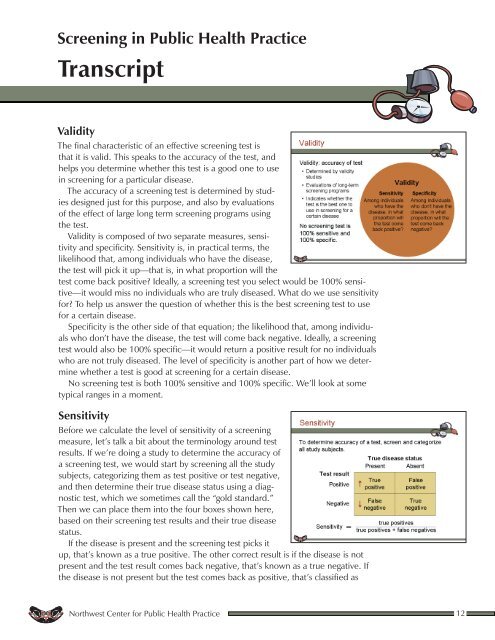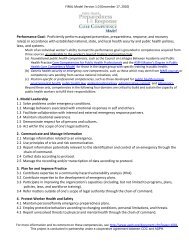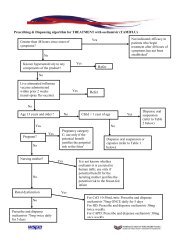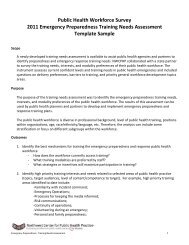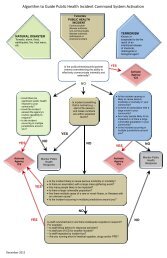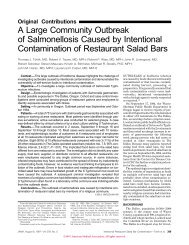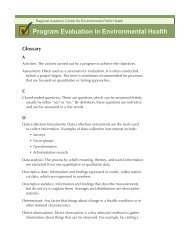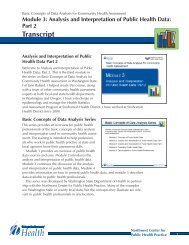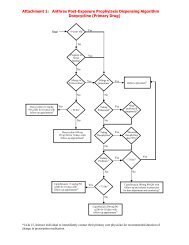Course transcript - Northwest Center for Public Health Practice
Course transcript - Northwest Center for Public Health Practice
Course transcript - Northwest Center for Public Health Practice
- No tags were found...
Create successful ePaper yourself
Turn your PDF publications into a flip-book with our unique Google optimized e-Paper software.
Screening in <strong>Public</strong> <strong>Health</strong> <strong>Practice</strong>TranscriptValidityThe final characteristic of an effective screening test isthat it is valid. This speaks to the accuracy of the test, andhelps you determine whether this test is a good one to usein screening <strong>for</strong> a particular disease.The accuracy of a screening test is determined by studiesdesigned just <strong>for</strong> this purpose, and also by evaluationsof the effect of large long term screening programs usingthe test.Validity is composed of two separate measures, sensitivityand specificity. Sensitivity is, in practical terms, thelikelihood that, among individuals who have the disease,the test will pick it up—that is, in what proportion will thetest come back positive? Ideally, a screening test you select would be 100% sensitive—itwould miss no individuals who are truly diseased. What do we use sensitivity<strong>for</strong>? To help us answer the question of whether this is the best screening test to use<strong>for</strong> a certain disease.Specificity is the other side of that equation; the likelihood that, among individualswho don’t have the disease, the test will come back negative. Ideally, a screeningtest would also be 100% specific—it would return a positive result <strong>for</strong> no individualswho are not truly diseased. The level of specificity is another part of how we determinewhether a test is good at screening <strong>for</strong> a certain disease.No screening test is both 100% sensitive and 100% specific. We’ll look at sometypical ranges in a moment.SensitivityBe<strong>for</strong>e we calculate the level of sensitivity of a screeningmeasure, let’s talk a bit about the terminology around testresults. If we’re doing a study to determine the accuracy ofa screening test, we would start by screening all the studysubjects, categorizing them as test positive or test negative,and then determine their true disease status using a diagnostictest, which we sometimes call the “gold standard.”Then we can place them into the four boxes shown here,based on their screening test results and their true diseasestatus.If the disease is present and the screening test picks itup, that’s known as a true positive. The other correct result is if the disease is notpresent and the test result comes back negative, that’s known as a true negative. Ifthe disease is not present but the test comes back as positive, that’s classified as<strong>Northwest</strong> <strong>Center</strong> <strong>for</strong> <strong>Public</strong> <strong>Health</strong> <strong>Practice</strong> 12


